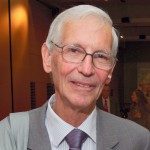Lien vers Pubmed [PMID] – 9047389
Oncogene 1997 Feb;14(7):819-30
We have analysed the different Jun and Fos proteins as NIH3T3 fibroblasts pass from exponential growth to quiescence and during the first 24 h after their re-entry into the cell cycle following serum stimulation. We show that these proteins can be divided into 3 subgroups based on their pattern of expression. The first contains c-Jun, Jun-D and Fra-2 which are expressed at high level in cycling cells and are only mildly induced by serum. The second contains Jun-B, c-Fos, Fos-B and deltaFos-B whose levels are low in cycling cells but increase strongly and rapidly after stimulation by serum. The third group contains only Fra-1, which is absent from cycling cells and behaves as a delayed early response protein after serum stimulation. AP-1 binding activity is low both in cycling and quiescent fibroblasts but increases after stimulation by serum with kinetics matching the induction of the various Jun and Fos proteins. Antibody supershift analyses demonstrate that the composition of AP-1 binding activity reflects the relative abundance of each Jun and Fos protein. Furthermore, the state of post-translational modification varies continuously for all of the AP-1 proteins as growth conditions change. These data indicate that AP-1 activity during the G0-G1 transition is finely regulated and complex, involving changes both in protein expression and in posttranslational modification.
